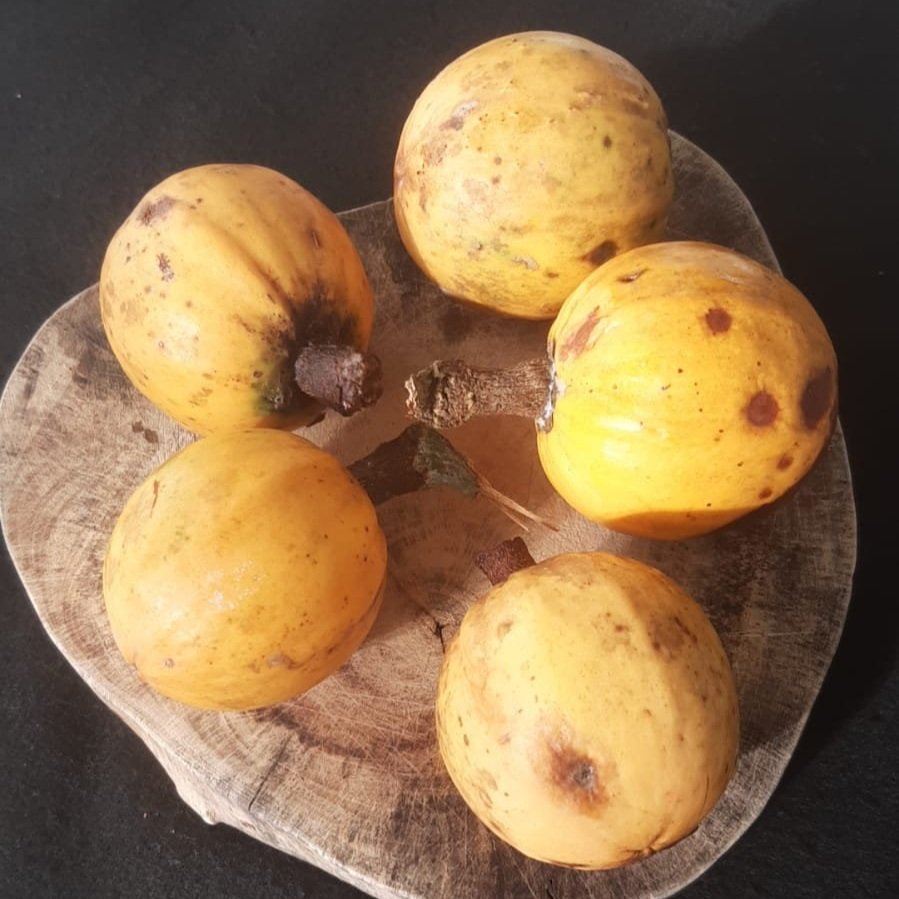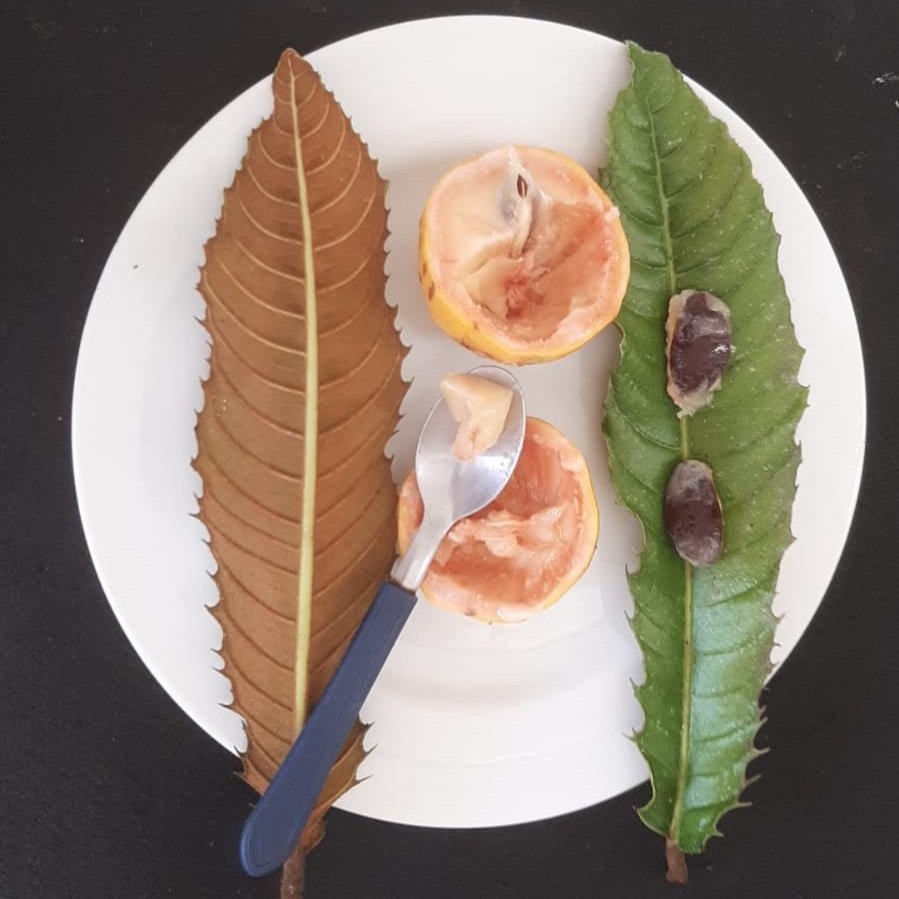Chrysophyllum Imperiale - Emperor's Fruit - Emperor's Tree
Seeds were imported from Brazil. Native to the Atlantic Forest, it is a medium to large plant, which can reach up to 25 meters in height. With beautiful large, ornamental leaves (50 - 60cm), with serrated edges, it stands out wherever you look. It produces fruits measuring 2.5 to 6cm, globose and flattened at the ends, with a smooth skin and a color ranging from yellow to orange. This is a highly endangered species - A survey carried out in 2015 pointed out that there are only 45 known specimens around the world. most of them in botanical gardens (Brazil, Lisbon, Portugal, Australia, Buenos Aires, Brussels). The plant gained the name of the emperor's tree due to the enormous appreciation with the emperor Dom Pedro I and his son Dom Pedro II had for its beauty and its fruits. It is also called Emperor's Fruit, or Emperor's Tree. During the Second Empire, this species was already rare due to the search for its wood for building ships and for its excellent qualities for obtaining charcoal. Making it even rarer after the end of the Empire, it is even suspected that republicans have eliminated specimens in the botanical gardens because their name was associated with the emperor. The tree produces a sweet and very pleasant tasting fruit, hard-shell with juicy pulp. Seeds are VERY viable and need to be planted upon arrival. These will be shipped in humid vermiculite.
This price is for one seed. The parent tree bore a few fruits unexpectedly outside its usual season, and this is the final set of seeds until it fruits again later this year. There’s no assurance it will produce again in the fall, so these might be the last seeds available for some time. Seeds are shipped in humid vermiculite.
Seeds were imported from Brazil. Native to the Atlantic Forest, it is a medium to large plant, which can reach up to 25 meters in height. With beautiful large, ornamental leaves (50 - 60cm), with serrated edges, it stands out wherever you look. It produces fruits measuring 2.5 to 6cm, globose and flattened at the ends, with a smooth skin and a color ranging from yellow to orange. This is a highly endangered species - A survey carried out in 2015 pointed out that there are only 45 known specimens around the world. most of them in botanical gardens (Brazil, Lisbon, Portugal, Australia, Buenos Aires, Brussels). The plant gained the name of the emperor's tree due to the enormous appreciation with the emperor Dom Pedro I and his son Dom Pedro II had for its beauty and its fruits. It is also called Emperor's Fruit, or Emperor's Tree. During the Second Empire, this species was already rare due to the search for its wood for building ships and for its excellent qualities for obtaining charcoal. Making it even rarer after the end of the Empire, it is even suspected that republicans have eliminated specimens in the botanical gardens because their name was associated with the emperor. The tree produces a sweet and very pleasant tasting fruit, hard-shell with juicy pulp. Seeds are VERY viable and need to be planted upon arrival. These will be shipped in humid vermiculite.
This price is for one seed. The parent tree bore a few fruits unexpectedly outside its usual season, and this is the final set of seeds until it fruits again later this year. There’s no assurance it will produce again in the fall, so these might be the last seeds available for some time. Seeds are shipped in humid vermiculite.
Seeds were imported from Brazil. Native to the Atlantic Forest, it is a medium to large plant, which can reach up to 25 meters in height. With beautiful large, ornamental leaves (50 - 60cm), with serrated edges, it stands out wherever you look. It produces fruits measuring 2.5 to 6cm, globose and flattened at the ends, with a smooth skin and a color ranging from yellow to orange. This is a highly endangered species - A survey carried out in 2015 pointed out that there are only 45 known specimens around the world. most of them in botanical gardens (Brazil, Lisbon, Portugal, Australia, Buenos Aires, Brussels). The plant gained the name of the emperor's tree due to the enormous appreciation with the emperor Dom Pedro I and his son Dom Pedro II had for its beauty and its fruits. It is also called Emperor's Fruit, or Emperor's Tree. During the Second Empire, this species was already rare due to the search for its wood for building ships and for its excellent qualities for obtaining charcoal. Making it even rarer after the end of the Empire, it is even suspected that republicans have eliminated specimens in the botanical gardens because their name was associated with the emperor. The tree produces a sweet and very pleasant tasting fruit, hard-shell with juicy pulp. Seeds are VERY viable and need to be planted upon arrival. These will be shipped in humid vermiculite.
This price is for one seed. The parent tree bore a few fruits unexpectedly outside its usual season, and this is the final set of seeds until it fruits again later this year. There’s no assurance it will produce again in the fall, so these might be the last seeds available for some time. Seeds are shipped in humid vermiculite.







